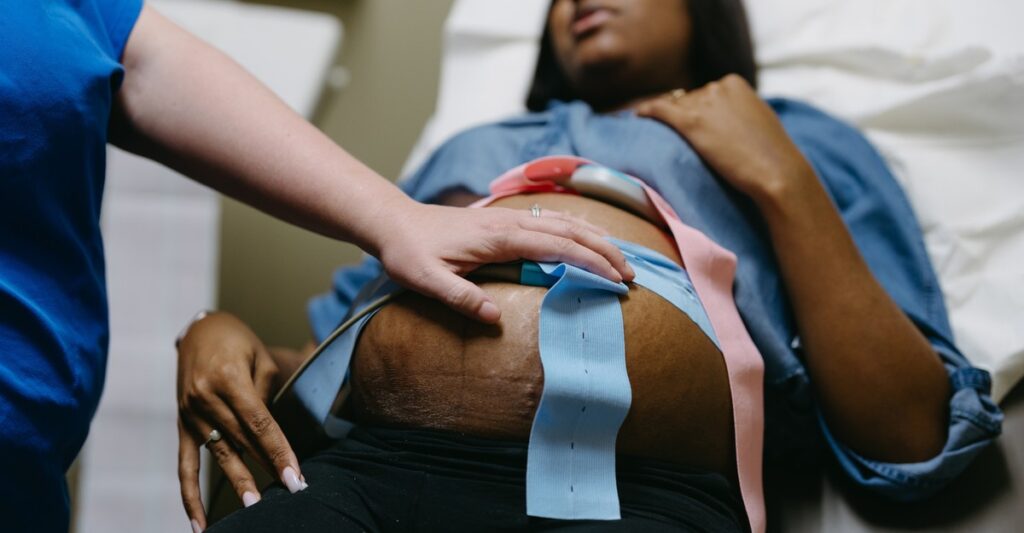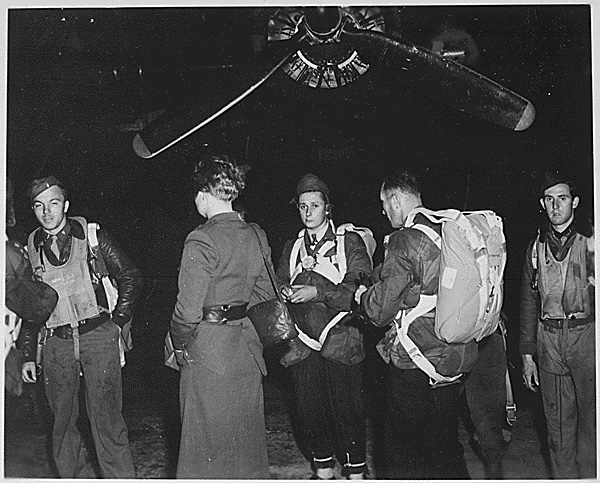The clinic was at the end of a craggy parking lot, in the husk of an old Dollar General, and on a morning in March when its future was more tenuous than ever, people were lining up to see a doctor while they still could.
A woman worried she was having a relapse of tuberculosis. A man had a mysterious cyst on his neck. An 87-year-old woman hobbled to the check-in desk.
“How’re you doing this morning, Ms. Birdie?” the receptionist said to Birdie Nelson.
“I’ve had a bad couple days—I’m tired,” said Nelson, giving her phone number. “That’s a landline.” She sat down in the waiting room, beyond which was Perry County, Alabama, an area of roughly 700 square miles with no hospital, one ambulance, and a per capita income of $16,900 a year. People called the clinic Cahaba, which was short for Cahaba Medical Care, a larger system that was managing to get doctors into some of the poorest, sickest, least-served parts of the state, and whose leaders were now worried that years of painstaking work was about to be undone.
The reason wasn’t only because so many patients relied on Medicaid, which was currently being targeted by the Trump administration for $880 billion in cuts. Cahaba’s clinics also depended upon an array of more obscure federal grants of the sort that President Donald Trump’s adviser Elon Musk and his Department of Government Efficiency had been summarily deleting before fully understanding the lives that would be upended in the real world.
In the gray language of the federal bureaucracy, the funding that mattered most was from the Teaching Health Centers Graduate Medical Education Program—THCGME—and it was the reason the clinic in Perry County and others in some of the poorest corners of rural America had any doctors at all.
“Please do not be nervous about your jobs because of the news cycle,” one of Cahaba’s co-founders, a doctor named John Waits, had emailed his staff in January as Musk began firing thousands of federal workers and Trump briefly froze all government grants.
Now it was March, the cuts were getting closer to home, and he was the one who was nervous. The $175 million THCGME grant was up for renewal. A Trump-aligned think tank, the Paragon Health Institute, had criticized the program, and now Paragon’s former director was a domestic-policy adviser to the president. The Heritage Foundation’s Project 2025 had proposed solving the rural health crisis with volunteers. Waits was facing not only the question of whether THCGME and so many more rural health programs would continue to exist, but a whole cascade of other questions that had to do with whatever the country was becoming.
What did being a leader mean at such a moment? What should he do to ensure Cahaba survived? The grant had always been renewed with bipartisan support, but did that Washington exist anymore? Did serious policy arguments matter anymore? Was it better to keep quiet and not risk offending the duly elected president, which he did not want to do, or speak up? If the latter, to whom? Did Congress matter, or only Trump, or only Musk? Was it naive to hope that an innovative billionaire who built space rockets could also understand the complex life of someone who scrounged for a $3.90 copay?
If the grant survived, for how long? And if it didn’t survive, what then? What would become of his staff? What would become of his patients? What would become of him? Was he being responsible, or paranoid? He was 51. How many more nights would he fall asleep in a recliner with half-eaten Chinese food in his lap? How many more times would he have to shut his office door because all he could think of were patients such as Birdie Nelson, and a DOGE worker at a keyboard pressing “Delete,” “Delete,” “Delete”?
There were so many questions, on top of the most urgent ones that came every day.
“Can we get a chest X-ray?” a doctor was saying at the clinic in Perry County. “She doesn’t have insurance. It’s us or nobody.”
Efficiency was not exactly the concern when Waits, a family physician and obstetrician, first started practicing medicine in 2003. He was a doctor’s son who had grown up in Alabama and been raised Southern Baptist, and his most fundamental conviction was that all human beings deserved health care, a belief that almost took him to Indonesia as a medical missionary until that plan got stalled. Instead, he moved to a town called Centreville, the seat of rural Bibb County, on the edge of Alabama’s Black Belt region, a fertile swath of the state defined first by slavery, then by the civil-rights movement, and that was now a lush green landscape of decaying towns, tornado-blasted trailers, chronic illness, and afflictions more common in developing nations.
After one week of seeing patients, Waits realized that the mission field was Alabama. And six months after opening his first clinic inside a red brick house in Centreville, he realized that policy ideas that had enthralled him as a college student, such as health savings accounts for the uninsured, made no sense for people who had nothing to save. He had patients who skipped appointments because they had no gas money. He had one who tried to pay his bill with pine straw, offering to landscape the flower beds outside the clinic.
Waits and his practice partner, Dr. Lacy Smith, another Alabama-born family-medicine physician, who joined Cahaba in 2011, had taken a “blood oath” never to turn anyone away, but the regular business model was not working. The two doctors were waiving appointment fees left and right for patients who could not afford them, and every hour came someone who needed not only a doctor but help with food, housing, or transportation, which the doctors would often cover out of their own salaries. So, in 2012, they converted Cahaba into a “federally qualified health center”—commonly known as a community health center, a nonprofit designation that enabled the clinic to receive specific Medicaid and Medicare reimbursements in exchange for doing what it was already doing. The idea went back to President Lyndon B. Johnson’s War on Poverty, a vision of how the government could create a more equitable country. Waits and Smith soon saw what that could mean.
As their nonprofit expanded, the percentage of low-income people with access to affordable care in Centreville rose from 7 percent in 2010 to 49 percent in 2014, according to federal data. Meanwhile, provisions of the Affordable Care Act were kicking in. The best-known was Medicaid expansion, which Alabama did not accept. A lesser-known provision was THCGME, the result of years of public-policy research and hard-won bipartisan consensus in Washington around solving one of the most persistent problems in American health care: how to get primary-care doctors into rural areas, roughly 80 percent of which the federal government designates as “medically underserved,” and most of which are in Republican states.
Traditionally, medical-school graduates complete their residencies at teaching hospitals in larger cities, places abounding with specialists, equipment, and nursing support. The idea behind the THCGME program was to establish residencies at health clinics in underserved areas where resources are scarce. The theory was that residents would not only gain confidence practicing medicine in a challenging context but develop a sense of mission about the work, and stay.
After an elaborate process of getting Cahaba accredited as a teaching health clinic, Waits and Smith welcomed their first group of four residents in 2013. The initial funding allocated $150,000 per resident, enough to pay for their salaries and the support staff needed to retool Cahaba as an educational institution. Smith and Waits were not at all sure the plan would work. But out of the first group of residents, one decided to stay on at the Centreville clinic after she finished. Another one stayed from the second group of four, and out of the third group, all four stayed—a pattern that continued not only at Cahaba but at more than 80 other health clinics that became teaching health centers in other parts of the country. Out of the roughly 2,000 doctors who have graduated from rural residency programs, roughly 70 percent have continued to practice in underserved areas, according to program data.
As a practical matter, the $175 million federal program was creating a steady pipeline of doctors into some of the nation’s worst health-care deserts: places such as the Choctaw Nation in Oklahoma, inner-city Detroit, and southern West Virginia. And every year, the grant got renewed with bipartisan support, even as Republicans tried to repeal the Affordable Care Act dozens of times.
In Alabama, Waits and Smith kept betting on that bipartisan version of Washington, and the residency program became integral to their vision for Cahaba. They recruited more residents into the program, and every year, more than half of them decided to continue working in underserved areas; many stayed with Cahaba. The clinic in Centreville expanded into a larger building, and all of this began to have spillover effects.
In a state where at least 14 rural hospitals have closed since 2010, Waits was able to tell the director of Bibb County’s only hospital that he’d never have to worry about recruiting doctors again. In 2015, the hospital reopened its labor-and-delivery unit, the first such unit to launch in Alabama in 20 years. When the mayor of Centreville pitched his town as a retirement destination, he could tell people that, yes, it had doctors and a hospital. Developers were building new housing. The town was repaving roads and sprucing up its downtown facades. By 2023, literally every low-income person in Bibb had access to affordable health care, according to federal data. State data also showed that the county’s infant mortality rate was beginning to drop.
Cahaba continued to expand, its share of the grant rising to $9 million, which was paying for a graduate program that now had 60 three-year residents who saw hundreds of patients across 11 rural clinics, two emergency rooms, a labor-and-delivery unit, and an RV for home visits to people who lived down long dirt roads in the pines. To Waits’s great satisfaction, two of the clinics were deep in the Black Belt.
One was in Wilcox County, where the only full-time doctor until the residents showed up was 82 years old, and had been trying to recruit a partner to take over his practice for 25 years. The other was the one in Perry County, off a two-lane road in a town called Marion.
The clinic was down the street from a hardware store, a boarded-up Hardee’s, and the rest of what Marion had become—a half-abandoned town of rotting antebellum houses, patched-up roofs, sunken porches, and frequent boil-water notices. When the doctors and medical residents first arrived, what came through the doors was a parade of long-term neglect. A woman whose breast cancer was so advanced that it was eating through her skin. Pregnant women with out-of-control blood pressure. People with diabetes-numbed legs and needlessly advanced heart disease. And now, six years after the Marion clinic opened, every day was a version of a recent Friday in March.
Exam room 8: “I don’t know what the thing is,” Birdie Nelson was saying to a resident named Joshua Murphy, complaining about a growth in her nose. “Sure been sore.”
“Well, let’s take a look,” Murphy said.
Exam room 6: A young man with a sexually transmitted disease.
Exam room 10: “How are you doing today, friend?” a resident named Reese Land was saying to Maurice Cash, who reported, proudly, that he was down 23 pounds.
“Well, that’s not a small thing. What’ve you been doing?” Land said.
“Just been trying not to eat so much junk,” Cash said, as Land told him that his cholesterol, blood pressure, and blood sugar were down too, which meant a lower risk of premature death in a county where life expectancy was a decade less than the national average.
Exam room 5: “When was the last time anyone took a look at your heart?” Murphy said to Richard Hopkins, who was 79. “Been a couple years?”
“Yeah,” Hopkins said.
“Okay let’s get you scheduled—that’s something we can do here,” Murphy said.
Exam Room 8: “Looks like your blood pressure finally went down,” a resident named Michael Wu was saying to a woman who had first come to the clinic when she was a few weeks pregnant and had uncontrolled hypertension, a situation that might have gone untreated in Perry County before 2018, when women had to drive 45 minutes to an hour away for prenatal care. “Those are healthy, healthy numbers, Ms. Thomas,” Wu said. “Beautiful.”
(Lucy Garrett for The Atlantic)
(Lucy Garrett for The Atlantic)
He walked down the hallway to go over the visit with Laura Lishman, a former resident who now ran the Marion clinic and was the only obstetrician in the county. She’d seen women barrel through the doors in advanced labor. She’d once seen a woman rush in with a newborn girl that was not her daughter, the baby turning blue, umbilical cord still dangling. Beyond saving the girl, Lishman knew the mother was probably somewhere bleeding out and yelled at the woman to go get her, which the woman did, which was why the mother was still alive. Cases like these were why Lishman had wanted to work in a county with one of the worst maternal mortality rates in the country, and why Waits had wanted her here.
“Oh nice,” she said now, reviewing Wu’s patient’s chart. “This is beautiful.”
Exam Room 10: “So we have three options,” Lishman told Briana Billingsly, going over delivery options with the 29-year-old, who had given birth to a stillborn child, most likely because of undetected preeclampsia, before she became a Cahaba patient. She had been seeing Lishman for prenatal care all through her current pregnancy. “If everything’s going fine with your blood pressure and you decide to deliver with me, I think we’d plan on a repeat C-section.”
“So you’re gonna do it?” Billingsly said.
“I hope so,” Lishman said.
“Ain’t that something,” Billingsly said. “We’ll be in there together.”
This was the less tangible part of what an obscure federal grant was creating in rural Alabama. Patients were getting used to the idea that these weren’t the kind of doctors who swooped in to study rural poverty and left. They weren’t beaming in on a computer screen. The doctors lived in Marion. Lishman and her husband had bought a farm on the outskirts of town. The residents lived five minutes from the clinic. They shopped at Foodvalu, and learned to pronounce it as locals did, food-valoo. They got their hair cut at Fresh Cutz, and knew the barber by name. They knew the history of Marion, because another doctor on staff, Michael Luther, made sure of it. He told each new class of residents about the 1965 killing of Jimmie Lee Jackson, a voting-rights activist, and how that had sparked the Selma-to-Montgomery marches. He told them that many of their patients would remember that, and how providing health care was an extension of a longer struggle. “We are trying to make a small dent in the universe,” he would tell them.
And that was how things had been going in Perry County, which struck Waits as an example of what government could be at its cost-efficient best, a version of American progress.
“This is working,” he would say to himself when he went over statistics showing improved health outcomes.
Then came the election, and DOGE, and a blizzard of executive orders, and an email that landed in Waits’s inbox: “Immediate Next Steps,” read the guidance sent to all THCGME grantees. “Carefully review policies, staffing plans, titles, roles and responsibilities, service offerings, etc., in the context of the related EOs. Consider immediate revisions and appropriate operational changes for compliance, particularly DEI.”
What did it mean? In Centreville, Waits and Smith began reading through all the executive orders. There was “Protecting Children From Chemical and Surgical Mutilation,” but they were already compliant. Cahaba had never provided gender-affirming care, even before that became illegal in Alabama. There was “Enforcing the Hyde Amendment,” but they were already following state anti-abortion laws. There was “Ending Radical and Wasteful Government DEI Programs and Preferencing,” which required more attention.
They reviewed their employment and promotion guidelines. Compliant. They considered Cahaba’s mission itself. Could DOGE possibly construe providing health care to their clientele as some sort of DEI program? No, they decided. As news reports emerged that certain words seemed to be triggering DOGE, Waits and Smith combed through their website and program materials for anything that might even remotely run the risk of making Cahaba seem noncompliant. Gone from their grant applications was the phrase health equity, which they had simply meant in the spirit of helping everybody. Gone, they decided, was a regular meeting they had implemented to talk about “cultural humility.”
One day, the administration froze all federal grants, then clarified that the freeze applied only to grants that violated executive orders, causing a surge of panic through Cahaba, so Waits emailed his staff. “Reasonable people might worry about headlines like ‘Health Resources Vanish Following D.E.I. and Gender Orders,’” he began. “Please do not be nervous.”
Meanwhile, he was following the news closely. DOGE was starting to delete federal grants. For foreign food aid. For international nuclear inspectors. For programs across the country, including in Alabama. Gone was $10 million for a school food program. Gone was $22 million for the state’s department of mental health. Gone were millions of dollars for medical research at the University of Alabama at Birmingham.
Now it was March, and the federal budget deadline was looming, a moment when whatever DOGE cut could be enshrined. The uncertainty was such that two teaching-health-center programs in Arizona and Maryland dropped out, worried they would be unable to fulfill their commitments to residents if federal funding was cut.
Waits and Smith were too invested in the program to drop out. Too much was in motion. Besides the 60 residents depending on the grant, and the hundreds of patients those residents saw every day, Cahaba was already recruiting the next class of residents.
Waits had cultivated close relationships with his congressional delegation over the years, all but one member of which were Republican, and most of whom had sent staff to tour the flagship clinic in Centreville. He began emailing and calling them. Their staff kept reassuring him. The congressman loves Cahaba. The senator loves what Cahaba is doing. One congressman reassured Waits that he was in contact with Musk.
Coincidentally, Waits and Smith had read a biography of Musk before the presidential election, as part of a book club they convened to keep up with innovative thinkers. On one hand, Waits wanted to believe that building rockets could translate into understanding the intricacies of health-care policy. He imagined all the arguments he’d make to Musk about the innovation of the residency program, how it was solving a vexing problem, how it ultimately saved money by keeping people out of emergency rooms. On the other hand, he kept thinking of Musk holding up what the Tesla CEO called the “chainsaw for bureaucracy.”
And so with two weeks to go before the federal budget deadline, Waits packed up a beaten leather briefcase with charts and graphs and headed to Washington, D.C., as he did every budget cycle. On a bright Tuesday in March, the line to get into the Dirksen Senate Office Building wound around the block.
“I’ve never seen it this crowded,” Waits said, making his way inside the marble hallways, one more citizen in an off-the-rack suit and a plastic nametag pleading for a budget line.
He passed by people representing community colleges from California and Virginia, and disabled veterans in full uniform. “Sorry,” he said, brushing by someone representing the American Association of Nurse Practitioners, and a professor from the University of Pittsburgh—“Ovarian-cancer trials are being stopped,” she was saying. “They need to know that their constituents are in my trials”—and soon Waits arrived for his first meeting: Senator Katie Britt, Republican, Appropriations Committee. He talked with her staff about health outcomes. He talked about keeping people out of expensive emergency rooms.
“I think it went well,” he said afterward, heading to the other side of the U.S. Capitol.
Outside, it was a bright and warm day. He passed metal barricades going up ahead of Trump’s speech to Congress that evening, and protesters chanting “No king!” and “Deport Elon!” He arrived at a House office building.
“All right,” Waits said, adjusting his tie, and heading through the heavy wooden doors of the House Committee on Energy and Commerce, which has jurisdiction over health programs.
“I just want them to know that it’s this policy, that it’s this program that’s making it happen,” he said after.
Back to the Senate side.
“John Waits? Teaching Health Centers?” he said to a receptionist in Alabama Senator Tommy Tuberville’s office.
Back to the House side.
“I could see he was interested,” Waits said after meeting more staffers, and at some point during the day of blue carpet and leather couches, Waits met with staff for Senate Majority Leader John Thune. When it was over, they invited him out on the leader’s private balcony, which Waits knew was the usual drill, but it was hard to be cynical looking out over the National Mall and the Washington Monument. This is worth preserving, he thought, then continued on to the last meeting of the day, with Representative Gary Palmer, who was a member of the House DOGE caucus, and who attended the meeting himself.
By then, Trump had posted a message on Truth Social. He wanted a “clean CR,” he wrote, a continuing resolution to keep the government funded through September, and now the congressman explained that THCGME funding would likely survive, though there were still 10 days to go.
Back in Centreville, Waits and Smith convened a meeting to go over what they’d do if THCGME got canceled. Smith stood in front of a whiteboard with a red marker.
“No THC,” she wrote at the top, abbreviating the grant’s acronym, and began listing what they would have to cut in order to keep the clinics open.
“Don’t recruit,” she wrote, meaning they’d try to survive with the staff they had.
“No family health insurance,” she wrote, referring to employee benefits.
“As time goes on we’d get rid of coordinators, because we don’t need them to coordinate anything,” Waits said, referring to staff that managed residency-program matters.
“What about the hospital?” he said.
“Can we hire someone to run the hospital without the residents?” Smith said.
Waits said they could hire a private staffing company—a kind of temp agency that supplies doctors for struggling rural hospitals—but that option was more expensive, plus it meant a rotating cast of physicians.
“Continuity of care would suffer,” Waits said. “Health care is already so fragmented.”
As they lost residents, they’d have to figure out how to juggle patients.
“Double-book appointments,” Smith wrote, and kept going.
No labor and delivery. No translation services. No psychiatric services. No adult vaccines. No ultrasounds. No RV for remote clinics. No remote appointments. No optometry. No echocardiograms. No vascular ultrasounds. She stopped writing.
The partners who had vowed never to turn anyone away stared at the sea of red representing the barest of bare-bones operations.
“I don’t feel the need to press further today,” Waits said.
He went into his office and shut the door.
He meditated. He prayed. He went running.
He attended a fundraiser for Cahaba in a strip mall with five round tables and Mexican takeout on paper plates, and addressed a group of pastors, two mayors, local officials, and businessmen.
“I hope to show you our value,” Waits said, clicking through slides starting with the original brick house in Centreville, and he could not have felt more grateful to raise $1,250 toward the $9 million that, if Palmer proved wrong, Cahaba would need to raise every year to cover the THCGME grant.
Then he waited. He shut his office door again. He watched an episode of The West Wing. He imagined the worst. He imagined the best: Musk said he cared about efficiency, and this program was efficient. Trump said he cared about rural America, and this was helping rural America. The new secretary of Health and Human Services, Robert F. Kennedy Jr., said he cared about chronic illness, and that’s what Cahaba residents were treating every hour.
A few days later, the House of Representatives gathered to vote on a continuing resolution to keep the government running, and Waits got an email from a contact in Washington saying that THCGME funding had made it into the resolution. As the Senate began considering the resolution a few days later, he got an email saying the funding was still there, on page 83, which is where it stayed as Senate Minority Leader Chuck Schumer rallied enough Democrats to pass the resolution, funding the government through September. When it was over, Waits felt momentarily relieved, but also something else.
“Disoriented,” he said.
The resolution would expire in six months. There had been so much stress and confusion but no debate over policy. No discussion of health outcomes. No discussion about what would happen if THCGME and so many other grants got canceled, discussions he was more than willing to have, and now the questions were starting again. Why had this grant survived when so many others hadn’t? Was it because someone had asked a favor of Elon Musk? Was it because the grantees had complied with executive orders? Was it because Alabama was a red state? Or was it simply because DOGE had not gotten around to them yet? What would he have to do in September? How much more time would he have to spend defending a program that Republicans and Democrats agreed was working, instead of building upon progress? What was the point? Who knew anymore. Waits emailed his staff.
“This is really great news about what we—and you—do every day,” he wrote. “And. I want you to remain vigilant. Because I’ll need you this summer / fall when we have to do this again.”
He did not mention what else was coming. The Trump administration was seeking $880 billion in Medicaid cuts. Soon, The Washington Post would report that the administration was proposing another $40 billion in cuts to the Department of Health and Human Services, including cuts to rural health programs.
But now it was the Monday after the continuing resolution had passed, and the clinic in Perry County was open, and the doctors were in, and a 71-year-old man with a heart condition was walking up to the check-in window.
“May I help you?” the receptionist said.
Premium IPTV Experience with line4k
Experience the ultimate entertainment with our premium IPTV service. Watch your favorite channels, movies, and sports events in stunning 4K quality. Enjoy seamless streaming with zero buffering and access to over 10,000+ channels worldwide.

















